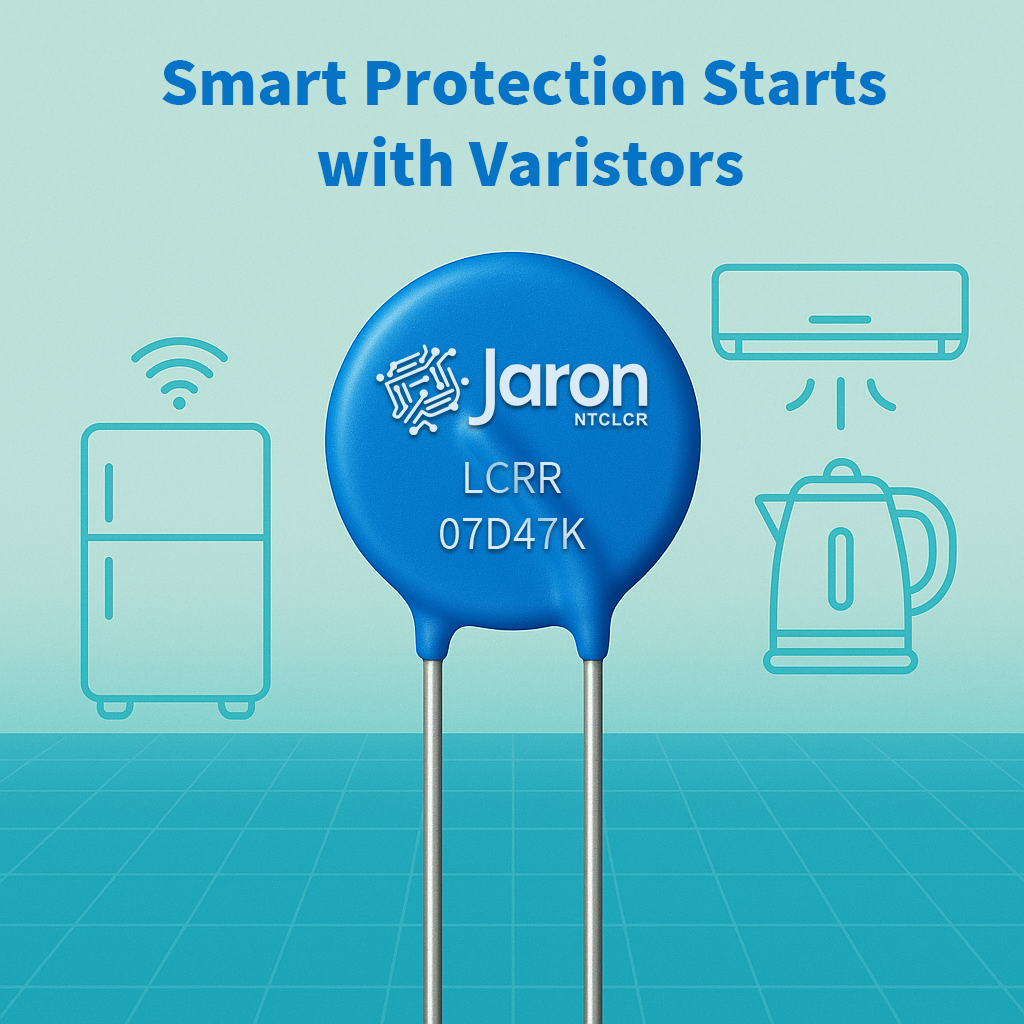This article details how varistors function as both primary and secondary surge protectors in smart home appliances, enhancing durability and safety.

As smart appliances become more common in homes, their internal electronics are increasingly sophisticated. From wireless connectivity modules to precision microcontrollers and power regulation circuits, today’s appliances function more like embedded computing systems than traditional machinery. While these advancements bring convenience and automation, they also increase vulnerability to voltage spikes and electrical surges.
Varistors, or voltage-dependent resistors, play a crucial role in safeguarding these devices from transient overvoltages. When exposed to normal voltage levels, a varistor behaves like a high-impedance resistor, allowing little to no current to pass through. However, once the voltage exceeds its clamping threshold—usually caused by lightning strikes, utility grid switching, or large motor startups—the varistor’s impedance drops dramatically, diverting the excess energy away from sensitive circuits.
In smart appliances such as refrigerators, air conditioners, water heaters, and induction cookers, varistors are typically installed at the power input stage. They are often paired with fuses, common-mode chokes, and X/Y capacitors to form the primary surge suppression layer. This combination protects the power conversion circuitry—such as switching regulators and bridge rectifiers—from initial voltage surges.
Beyond the main power input, varistors are also used in secondary protection roles. For instance, on the control boards of smart appliances, smaller varistors may be placed near communication lines or between key ICs and power rails. These secondary varistors shield delicate microcontrollers and sensors from internal surge propagation and electrostatic discharge (ESD) events.
A notable advantage of varistors is their passive nature. They require no biasing or control signal, making them ideal for compact embedded systems. Their fast response time—on the order of nanoseconds—and energy absorption capabilities are essential for maintaining operational stability in the presence of environmental disturbances.
Additionally, the cost-effectiveness and wide voltage range availability of varistors make them a preferred choice over more complex protection components like TVS arrays or crowbar circuits in home appliance design.
In a world where smart devices are becoming deeply integrated into everyday life, ensuring their longevity and safety is a top priority. Varistors help meet this need by silently and efficiently absorbing the electrical shocks that would otherwise shorten the lifespan of these intelligent machines. As such, they have become a fundamental element in the protection strategy of modern household electronics.
Varistor | Appliance Protection | Surge Absorption